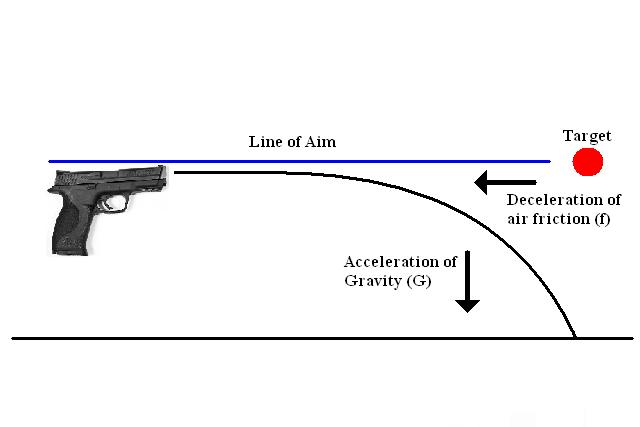You are using an out of date browser. It may not display this or other websites correctly.
You should upgrade or use an alternative browser.
You should upgrade or use an alternative browser.
Your Gun Cant...
- Thread starter Phauxtoe
- Start date
Marine Cpl
.577 Tyrannosaur.
She's incorrect. The bullet doesn't arc up. It goes straight like a laser beam until it loses steam and drops.
The sights make you shoot higher at 100 yards for example so that when it loses steam, it'll drop to the bulls eye.
So when you shoot gangster style, you are actually shooting to the left or right depending on wear your scope is (left or right) and then it drops too.
She's still hot though and has skills.
The sights make you shoot higher at 100 yards for example so that when it loses steam, it'll drop to the bulls eye.
So when you shoot gangster style, you are actually shooting to the left or right depending on wear your scope is (left or right) and then it drops too.
She's still hot though and has skills.
Marine Cpl
.577 Tyrannosaur.

carpediem
.338 Win Mag
Line of sight and trajectory are not the same. The projectile does rise above the line of sight in order to hit the point of aim. No firearm on the planet shoots completely flat at longer ranges. See these from Hornaday.

And a second;


And a second;

Marine Cpl
.577 Tyrannosaur.
It rises because your sights are actually making the bullet shoot high.Line of sight and trajectory are not the same. The projectile does rise above the line of sight in order to hit the point of aim. No firearm on the planet shoots completely flat at longer ranges. See these from Hornaday.

And a second;

carpediem
.338 Win Mag
Correct. The projectile does not make a laser like path in flight. It begins to drop immediately, but the elevation built in to the sights cants the bore axis upward to "lob" the round onto the target. She is correct if she is describing the trajectory of the round as it relates to the shooters line of sight though. If you look directly at the target, the round rises because the bore axis is inclined, and the arc of it's trajectory is set to coincide with the point of aim through the sight system used.It rises because your sights are actually making the bullet shoot high.
Marine Cpl
.577 Tyrannosaur.
At 2 minutes she is saying that the bullet rises. It doesn't. It goes straight like a laser beam and then drops. I realize it starts dropping but for the first few inches and more it goes straight.Correct. The projectile does not make a laser like path in flight. It begins to drop immediately, but the elevation built in to the sights cants the bore axis upward to "lob" the round onto the target. She is correct if she is describing the trajectory of the round as it relates to the shooters line of sight though. If you look directly at the target, the round rises because the bore axis is inclined, and the arc of it's trajectory is set to coincide with the point of aim through the sight system used.
Uzi
.308 Win
Those vampire k9's look painful, but her eyes would still make it worthwhile for sure. I'm sorry what was this discussion about again?
Last edited:
carpediem
.338 Win Mag
Sort of. It does rise because it travels in an arc. What you are saying ONLY applies to the axis of the bore. The round will never rise above the bore axis. It always, however, rises above the line of sight of the shooter unless the distance to the target is point blank. People will say the bullet rises because of the time it spends above the line of sight.At 2 minutes she is saying that the bullet rises. It doesn't. It goes straight like a laser beam and then drops. I realize it starts dropping but for the first few inches and more it goes straight.
Marine Cpl
.577 Tyrannosaur.
It
That's what I'm saying.It doesn't rise. You are pointing it to shoot higher like a mortar, artillery, or blooper grenade launcher so that it drops into the target.
The bullet after leaving the barrel never rises one bit. It starts falling immediately.
Sort of. It does rise because it travels in an arc. What you are saying ONLY applies to the axis of the bore. The round will never rise above the bore axis. It always, however, rises above the line of sight of the shooter unless the distance to the target is point blank. People will say the bullet rises because of the time it spends above the line of sight.
That's what I'm saying.It doesn't rise. You are pointing it to shoot higher like a mortar, artillery, or blooper grenade launcher so that it drops into the target.
The bullet after leaving the barrel never rises one bit. It starts falling immediately.
carpediem
.338 Win Mag
Right. But most people frame it in reference to the shooters line of sight, which is straight, obviously. So, when she says "the bullet rises", she is framing it in reference to the shooters line of sight. The projectile only crosses this line 2 times. Once at the muzzle and again at the target. The rest of it's time in transit, it is above your line of sight. That is why she says "it rises".It
That's what I'm saying.It doesn't rise. You are pointing it to shoot higher like a mortar, artillery, or blooper grenade launcher so that it drops into the target.
The bullet after leaving the barrel never rises one bit. It starts falling immediately.
It
The bullet after leaving the barrel never rises one bit. It starts falling immediately.
Agree with what you are saying absent any wind which can cause a bullet to rise (vertical deflection). Also believe some compensators can cause pressure imbalance on projectile immediately upon leaving muzzle which can cause an immediate rise above bore axis.
I concur, those eyes give an increase in elevation.Those vampire k9's look painful, but her eye's would still make it worthwhile for sure. I'm sorry what was this discussion about again?
Acer-m14
20×102mm Vulcan
Kirsten can shoot with me or bite me anytime LOL ... but i think her message is for new shooters in simple terms they can understand and then learn more later ..
Prudii
.357 mag
Yea the bit at 2:20 could be confusing as hell to a new shooter who doesn't understand the rising trajectory she is talking about is in reference to the shooters line of sight.
Marine Cpl
.577 Tyrannosaur.
And pants on.I should probably watch the video with the sound and lights on next time.
ProgSpear
.338 Win Mag
Line of sight and trajectory are not the same. The projectile does rise above the line of sight in order to hit the point of aim. No firearm on the planet shoots completely flat at longer ranges. See these from Hornaday.

And a second;

Then add in the fact that the projectile is slowing down during it's time of flight, meaning the time of flight for the second hundred yards is more than the first hundred yards, thus more time for gravity to accelerate the downward drop.

